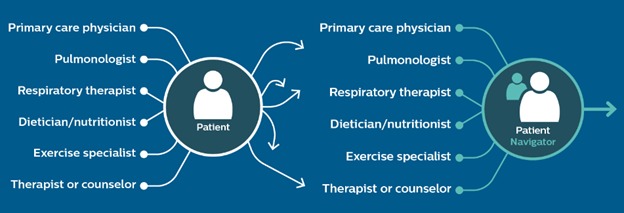

 03 WEEKS BEST SELLER
03 WEEKS BEST SELLERHealth Navigation Fundamentals will teach students the basic concepts of patient navigation and assisting patients along the healthcare continuum. Students will develop skills necessary to effectively communicate and build relationships with patients within the complex system. Students will also learn how to evaluate and locate health care resources and support systems concerning an individual’s health. Within our program for future healthcare navigators, we explore varying stages of care, social determinants that impact physical health, and reducing disparities in access and treatment will be reviewed. Barriers to care, problem-solving, and managing information and resources will also be discussed.
A patient navigator is a member of the healthcare team who helps patients “navigate” the healthcare system and get timely care. Navigators help coordinate patient care, connect patients with resources, and help patients understand the healthcare system. Patient navigators work in many areas of healthcare. Many have one chronic disease focus area such as cancer, heart disease, or diabetes.
A health navigator (also known as a patient navigator or resource navigator) is a member of the health care team who helps individuals overcome barriers to quality care. They address barriers including access to health care, insurance or lack thereof, poor health literacy, transportation, child care and more. Health navigators usually are trusted members of the community they serve and have an understanding of the community served, often due to shared lived experiences.
Health navigators build effective working relationships with patients, helping to support, educate and assist patients to navigate the complex healthcare system. Health navigators need to work effectively with patients, healthcare providers and community partners. They need to be able to identify their patient’s physical, emotional, and cultural needs and help them access appropriate resources to meet these needs. Health navigators have a good understanding of the health resources
Patient navigators build relationships, solve problems and locate resources. This topic area discusses patient navigator roles and responsibilities and allows you to practice effective communication and problem-solving skills. Navigators will also learn how to locate and evaluate patient resources and learn strategies for working with the healthcare team, community agencies, and organizations that serve patients.
Some organizations and institutions offer certification programs in business writing. These programs aim to improve your business writing skills, and upon completion, you receive a certificate as proof of your proficiency. These certifications can be beneficial for career advancement and improving your writing abilities. You can search for accredited programs or courses from reputable institutions that offer business writing certifications.
Patient navigators work closely with patients, develop trust and learn about their personal lives. Sometimes the line between a professional and personal relationship can become unclear. This topic area clarifies the role of a patient navigator and provides tips for keeping patient relationships professional. We also explore ethical issues faced by patient navigators and discuss how to approach ethical decisions.
This 6-hour overview presents basic concepts of motivational interviewing. You will learn how asking open-ended questions and reflective listening can help a client talk about and change health behavior.
Mark Jack
22 April, 2022Lorem ipsum dolor sit amet, consectetur adipiscing elit, sed do eiusmod tempor incididunt ut labore et dolore magna aliqua. Ut enim ad minim veniam, quis nostrud exercitation ullamco
Alexa Deo
26 April, 2022The purpose of lorem ipsum is to create a natural looking block of text (sentence, paragraph, page, etc.) that doesn't distract from the layout. A practice not without controversy, laying out pages.
Tara sing
26 April, 2022The passage experienced a surge in popularity during the 1960s when Letraset used it on their dry-transfer sheets, and again during the 90s as desktop publishers bundled the text with their software.